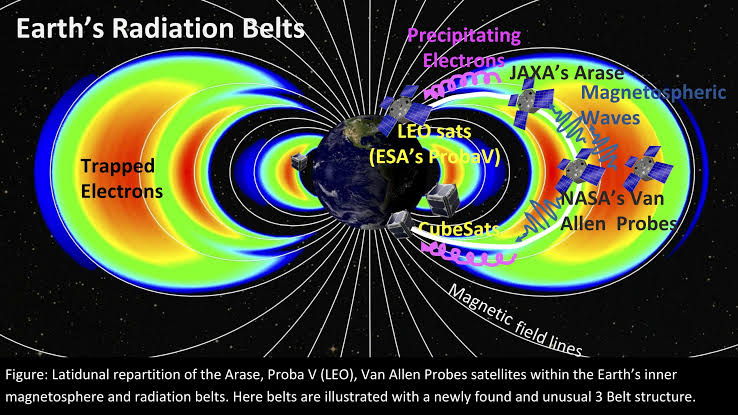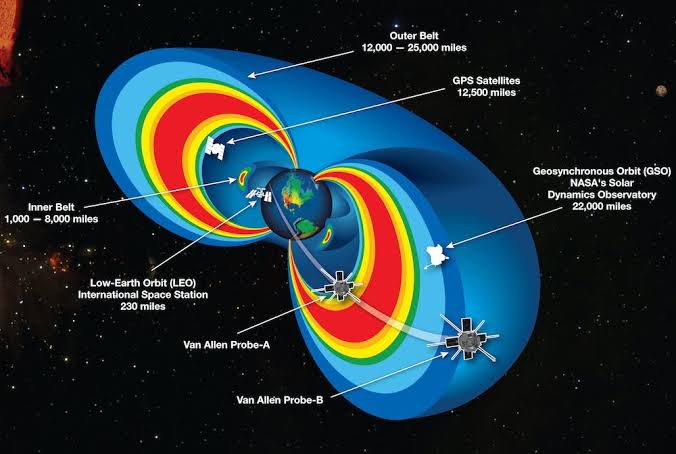New Radiation Belt Discovered Around Earth
Scientists have seen a new radiation belt around Earth, according to a study published in the journal Science. The belt, which is located about 11,900 to 13,900 miles (19,100 to 22,300 kilometers) above the planet’s surface, was discovered by NASA’s twin Van Allen Probes.
The new belt is made up of super-high-energy electrons embedded in the outer Van Allen belt. It is thought to be created by the interaction of solar wind particles with Earth’s magnetic field.
The discovery of the new belt is a significant finding, as it provides new insights into the dynamics of Earth’s radiation environment. It also raises concerns about the potential hazards to astronauts and satellites that fly through the belt.

The Van Allen Probes are a pair of NASA spacecraft that were launched in 2012 to study Earth’s radiation belts. The probes are equipped with a variety of instruments that allow them to measure the composition, energy, and distribution of particles in the belts.
The discovery of the new radiation belt was made possible by the probes’ high-resolution instruments. The instruments were able to detect the presence of super-high-energy electrons in the outer Van Allen belt, which had not been seen before.
The new belt is thought to be created by the interaction of solar wind particles with Earth’s magnetic field. The solar wind is a stream of charged particles that is ejected from the sun. When these particles interact with Earth’s magnetic field, they can be trapped in the radiation belts.
The discovery of the new belt is a significant finding, as it provides new insights into the dynamics of Earth’s radiation environment. It also raises concerns about the potential hazards to astronauts and satellites that fly through the belt.
Astronauts who travel through the radiation belts can be exposed to high levels of radiation, which can increase their risk of developing cancer. Satellites can also be damaged by the radiation, which can lead to malfunctions or even destruction.
There are a number of ways to protect astronauts and satellites from the radiation belts. One way is to use shielding, which can reduce the amount of radiation that reaches the astronauts or satellites. Another way is to fly through the radiation belts as quickly as possible, which reduces the amount of time that astronauts and satellites are exposed to radiation.
The discovery of the new radiation belt is a reminder of the dangers that astronauts and satellites face when they operate in space. It is also a reminder of the importance of continuing to study Earth’s radiation environment so that we can better protect those who travel through it.

